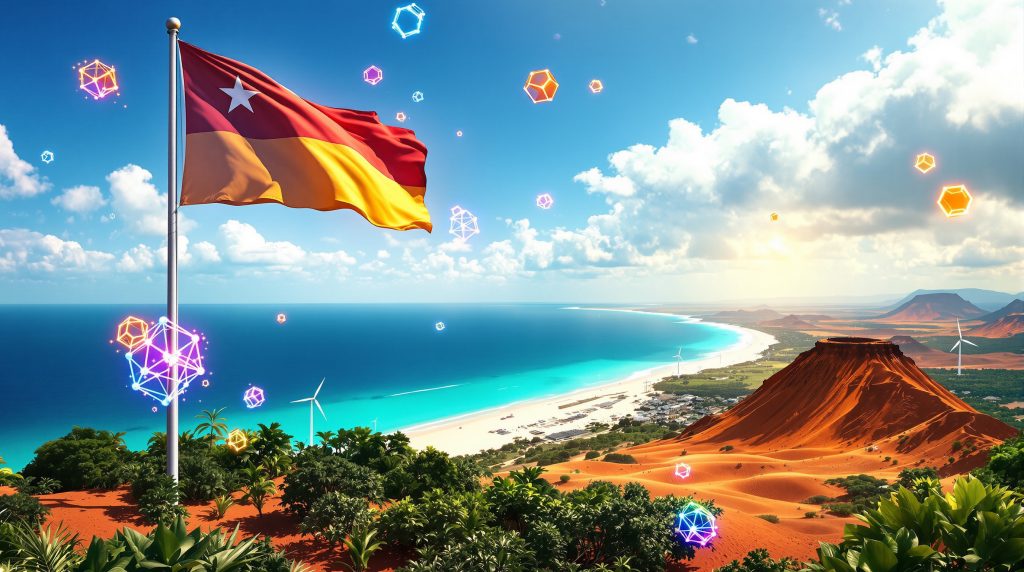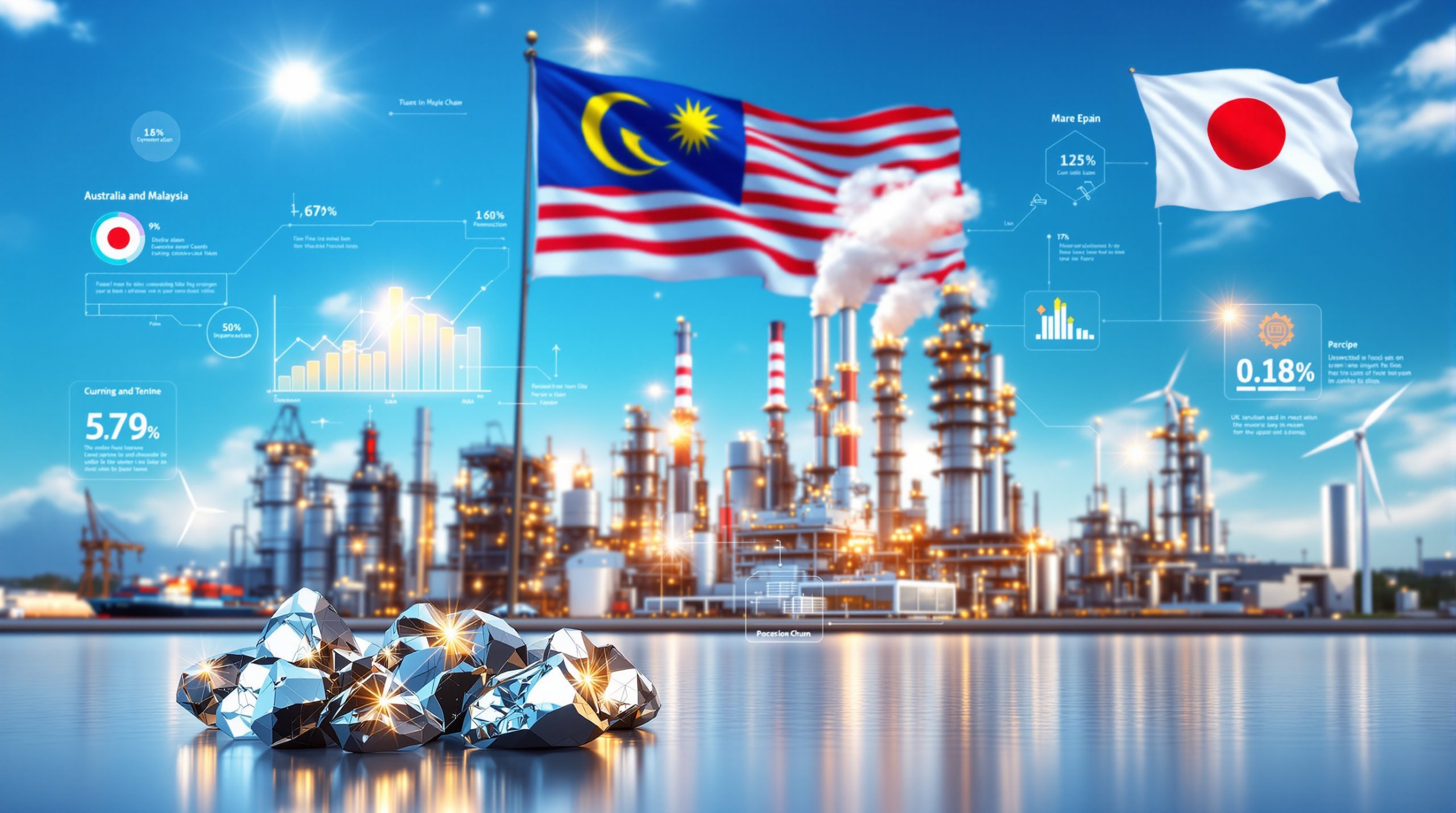Madagascar's emergence as a critical player in the global Madagascar rare earths supply chain represents a significant shift in supply chain dynamics. The island nation's unique geological advantages and strategic positioning offer Western markets an alternative to Chinese dominance in this essential sector, particularly as critical minerals energy transition initiatives accelerate globally.
The country's rare earth deposits consist primarily of ionic clay formations, which present distinct advantages over traditional hard-rock mining operations. These deposits contain substantial concentrations of heavy rare earth elements (HREEs), including dysprosium, neodymium, and europium – materials that are essential for modern technological applications.
Resource Classification and Geological Advantages
Madagascar's rare earth resources differ fundamentally from conventional mining operations worldwide. The ionic clay deposits allow for in-situ heap leaching extraction, a process that significantly reduces environmental impact compared to traditional mining methods.
The Ampasindava Peninsula project showcases these geological advantages with its 699 million tonne total resource containing 606,000 tonnes TREO (Total Rare Earth Oxide). This substantial resource base positions Madagascar among the world's most significant rare earth deposits outside of China.
Furthermore, the concentration of heavy rare earth elements in these deposits provides particular strategic value. Unlike many global rare earth projects that focus primarily on light rare earth elements, Madagascar's resources contain the critical heavy elements required for advanced manufacturing applications.
Current Production Landscape and Market Dynamics
Madagascar's rare earth sector has experienced considerable fluctuation in recent years. Production levels reached 2,000 metric tons in 2024, representing a significant decline from the 6,800 tons produced in 2021. This reduction reflects various operational and market challenges that have affected the sector.
Despite current production levels, industry projections suggest Madagascar could contribute substantially to Africa's targeted 9-10% share of global rare earth supply. This ambitious goal reflects both the resource potential and the strategic importance of developing non-Chinese supply sources, aligning with broader critical minerals strategy objectives.
The production decline factors include:
- Regulatory complexities and permitting delays
- Infrastructure development challenges
- Market volatility affecting investment decisions
- Environmental compliance requirements
- Political transitions impacting business operations
However, recovery outlook remains positive as new projects advance through development phases and regulatory frameworks become more streamlined.
Ampasindava Peninsula: A Game-Changing Development
The Ampasindava Peninsula represents Madagascar's most advanced rare earth project, offering unique advantages in both resource quality and extraction methodology.
Project Specifications and Strategic Importance
Harena Resources' Ampasindava project demonstrates the potential for sustainable rare earth production outside traditional mining frameworks. The project's approach emphasises concentrate production rather than full-scale mining operations, as highlighted in this Global Mining Review analysis.
Key project specifications include:
| Metric | Value |
|---|---|
| Total Resource | 699 million tonnes |
| TREO Content | 606,000 tonnes |
| Primary HREEs | Dysprosium, neodymium, europium |
| Extraction Method | In-situ heap leaching |
| Infrastructure Requirements | Minimal (port access focused) |
The project's heavy rare earth concentration provides significant strategic value for Western supply chains seeking alternatives to Chinese sources. These elements are essential for permanent magnet production, critical for electric vehicle motors and wind turbine generators.
Innovative Extraction Methodology
Traditional rare earth mining involves extensive environmental disruption through hard-rock extraction and processing. Madagascar's ionic clay deposits enable a fundamentally different approach through in-situ heap leaching.
This methodology offers several advantages:
- Reduced environmental footprint through minimal surface disruption
- Lower energy requirements compared to conventional mining
- Decreased water consumption relative to hard-rock processing
- Simplified infrastructure needs for project development
- Faster development timelines due to reduced complexity
In addition, the in-situ approach produces concentrate suitable for refining, eliminating the need for extensive on-site processing facilities. This concentrate can then be shipped to specialised refining facilities, creating a more flexible and cost-effective supply chain model.
Energy efficiency metrics demonstrate substantial advantages over conventional rare earth extraction. While specific quantified data varies by project, in-situ heap leaching typically requires 40-60% less energy per tonne of rare earth oxide recovered compared to hard-rock mining operations.
Addressing Development Challenges
Madagascar's rare earth sector faces significant obstacles that must be addressed for successful project development, particularly as mining industry innovation continues to evolve.
Social Licence and Environmental Considerations
Community engagement represents a critical factor in project success. Agricultural communities near potential mining sites have expressed concerns about land use changes and environmental impacts.
Key social challenges include:
- Land use conflicts between mining activities and agricultural operations
- Community consultation requirements for project approval
- Environmental impact assessments addressing local ecosystem concerns
- Benefit-sharing arrangements ensuring local community participation
- Cultural heritage protection in historically significant areas
Environmental considerations focus on maintaining Madagascar's unique biodiversity while enabling economic development. The island's endemic species and fragile ecosystems require careful protection during any industrial development.
Moreover, recent political developments have created more favourable conditions for mining investment. Youth-led reform movements in 2025 pushed for economic improvements, faster government approvals, and enhanced business stability. These changes reduce project development risks and create more predictable regulatory environments.
Regulatory Framework Navigation
Madagascar operates a three-stage licensing system that governs rare earth development:
- Exploration Stage – Initial resource assessment and preliminary studies
- Transformation Stage – Advanced technical studies and environmental assessments
- Exploitation Stage – Full production authorisation and operational permits
Current regulatory developments favour mining sector growth. The government has implemented waiver systems allowing early-stage project activities during permitting processes, reducing development timelines significantly.
Near-term regulatory milestones for advanced projects include:
- Pre-feasibility study submissions
- Exploitation permit upgrades from transformation licences
- Defined feasibility studies with government and partner agency support
- Pilot testing and proof-of-concept work authorisation
Industry experts suggest production could commence within two years for well-positioned projects, representing accelerated timelines compared to historical development periods.
Strategic Supply Chain Integration
Madagascar's rare earth resources align closely with Western supply chain diversification objectives, particularly for the United States market.
Reducing Chinese Market Dependence
China currently controls more than 90% of global rare earth processing capacity, creating significant supply vulnerabilities for Western manufacturers. Beijing's export control policies, implemented amid rising geopolitical tensions, have intensified diversification efforts across multiple industries.
Western original equipment manufacturers increasingly seek traceable, non-Chinese rare earth sources for critical applications including:
- Defence system components and advanced weaponry
- Clean energy infrastructure and renewable power generation
- Advanced manufacturing and precision electronics
- Electric vehicle production and battery systems
Consequently, this demand shift creates substantial opportunities for Madagascar's emerging rare earth sector.
United States Strategic Engagement
US government agencies have demonstrated exceptional support for critical minerals diversification compared to other Western nations. The International Development Finance Corporation and EXIM Bank provide financing mechanisms specifically designed to support non-Chinese rare earth development.
American investment strategy advantages include:
- Coordinated government and private sector approach to critical minerals
- Dedicated financing institutions supporting overseas project development
- Strategic stockpiling initiatives creating guaranteed demand for production
- Regulatory frameworks favouring domestic supply chain integration
- Technology transfer partnerships enhancing processing capabilities
However, European approaches to rare earth supply diversification have been less coordinated, with funding and regulatory support varying significantly between member states. This creates competitive advantages for projects aligned with US strategic priorities.
Technology Demand Evolution
Rare earth demand patterns are evolving rapidly beyond traditional applications, creating new growth opportunities for Madagascar's resources.
Electric Vehicle and Renewable Energy Growth
Electric vehicle production represents the most significant near-term demand driver for rare earth elements. Neodymium-praseodymium (NdPr) permanent magnets are essential components in EV motor systems, while dysprosium enhances high-temperature performance characteristics.
Wind turbine generators require substantial rare earth inputs for direct-drive systems. Each 2-3 MW wind turbine typically contains 200-600 kg of permanent magnet materials, creating enormous demand as renewable energy installations accelerate globally.
Demand projections through 2030 suggest:
- Electric vehicle sales growing at 25-30% annually in key markets
- Wind turbine installations expanding by 15-20% per year globally
- Permanent magnet requirements increasing exponentially across applications
- Heavy rare earth premiums strengthening due to supply constraints
Emerging Applications in AI and Robotics
Artificial intelligence and robotics applications represent the fastest-growing segment for rare earth demand. These technologies require specialised magnetic materials for precision motors, sensors, and actuators.
Defence sector applications are expanding rapidly:
- Autonomous systems requiring miniaturised motor technologies
- Precision guidance systems using rare earth permanent magnets
- Advanced radar and communications equipment incorporating rare earth elements
- Robotic platforms for surveillance and combat operations
Industry analysis suggests exponential growth rates for AI and robotics applications, potentially exceeding traditional electric vehicle demand expansion. This growth creates substantial long-term value for rare earth producers with appropriate product specifications.
Investment Landscape and Opportunities
Madagascar's rare earth sector attracts significant international investment interest, particularly from US-focused institutions.
Major Investor Participation
Leading rare earth projects have secured backing from prominent investment groups, reflecting broader industry consolidation trends observed globally:
US-Based Investors:
- Wexford Capital (Connecticut) – Specialised commodity investment focus
- Fondren LP (Houston) – Energy and materials sector expertise
International Participation:
- RAB Capital (United Kingdom) – Resource sector specialisation
- Carlyle Group representation through Jeff Currie (former Goldman Sachs commodity division head)
Investment strategies emphasise OTC listing approaches for US market access, enabling broader investor participation and enhanced liquidity for project financing.
Development Timeline and Financing
Current project development follows accelerated timelines compared to traditional mining operations:
Near-Term Milestones (2025-2027):
- Pre-feasibility study completion – Technical and economic validation
- Exploitation permit upgrades – Regulatory advancement to production authorisation
- Definitive feasibility studies – Detailed engineering and financial modelling
- Strategic partnership finalisation – Offtake agreements and processing arrangements
- Pilot plant operations – Proof-of-concept validation and optimisation
Production Timeline Projections:
"Industry experts anticipate production commencement within two years for advanced projects, representing significantly faster development compared to hard-rock mining alternatives."
This acceleration results from simplified extraction methodologies, reduced infrastructure requirements, and streamlined regulatory processes supporting critical minerals development.
Market Impact and Future Projections
Madagascar's rare earth production will create substantial ripple effects throughout global supply chains, particularly as junior mining strategies adapt to evolving market conditions.
Supply Chain Rebalancing Effects
Successful Madagascar production development could contribute materially to US rare earth independence objectives. Current dependence on Chinese processing creates strategic vulnerabilities that alternative supply sources can address.
Market share redistribution projections suggest:
- 5-8% reduction in Chinese market dominance within five years
- Regional supply hub development serving African and Middle Eastern markets
- Price stability improvements through competitive supply alternatives
- Quality premiums for traceable, ethically-sourced materials
Furthermore, long-term contract structures are emerging as preferred arrangements over spot market pricing, providing revenue stability for producers and supply security for consumers.
Sector Consolidation and Expansion Trends
Industry consolidation appears inevitable as projects seek economies of scale and operational efficiency improvements. Combining complementary projects creates larger, more viable operations capable of serving major consumer markets.
Five-Year Market Outlook:
| Metric | Current | 2030 Projection |
|---|---|---|
| Madagascar Production | 2,000 MT | 15,000-20,000 MT |
| Global Market Share | <1% | 3-5% |
| Non-Chinese Supply | 8-10% | 18-25% |
| Processing Capacity | Limited | Regional hub potential |
Critical minerals portfolio expansion beyond rare earths represents significant growth opportunities. Madagascar's geological diversity includes graphite, lithium, and other strategic materials that could support integrated mining operations.
Strategic Positioning for Critical Minerals Security
Madagascar's rare earth development contributes significantly to Western critical minerals security objectives while creating substantial economic opportunities for the island nation.
Success Factors for Sustainable Development
Achieving long-term success requires balancing multiple priorities:
Environmental Sustainability:
- Maintaining biodiversity protection standards
- Implementing restoration programmes for affected areas
- Utilising low-impact extraction technologies
- Monitoring ecosystem health throughout operations
Community Engagement:
- Establishing benefit-sharing mechanisms for local populations
- Creating employment opportunities in rural areas
- Supporting agricultural diversification programmes
- Respecting traditional land use patterns
Strategic Partnerships:
- Aligning with Western government policy objectives
- Securing long-term offtake agreements with major consumers
- Developing processing and refining capabilities
- Building integrated supply chain relationships
Long-Term Supply Chain Implications
Madagascar's emergence as a reliable rare earth supplier supports broader strategic objectives for Western economies. Critical minerals independence reduces geopolitical vulnerabilities while enabling clean energy transition acceleration.
Regional development potential extends beyond rare earths to encompass broader African critical minerals development, as explored in this analysis of Africa's emerging role. Madagascar could serve as a regional processing hub supporting mineral extraction across East Africa.
The country's strategic location provides advantageous shipping access to major consumer markets in North America, Europe, and Asia. This geographic positioning, combined with political stability improvements and regulatory framework development, creates favourable conditions for sustained sector growth.
Disclaimer: This analysis is based on publicly available information and industry projections. Rare earth markets involve significant price volatility and project development risks. Investment decisions should consider comprehensive due diligence and professional advisory input. Production timelines and market projections represent current industry assessments and may change based on regulatory, technical, or market developments.
Future Madagascar rare earths supply chain development will depend on successful navigation of environmental, social, and regulatory challenges while maintaining alignment with evolving global demand patterns and geopolitical considerations.
Ready to Capitalise on Madagascar's Rare Earth Revolution?
Discovery Alert's proprietary Discovery IQ model delivers real-time alerts on significant rare earth and critical minerals discoveries across the ASX, instantly empowering subscribers to identify actionable opportunities ahead of the broader market. Explore Discovery Alert's discoveries page to understand why major mineral discoveries can generate exceptional returns, then begin your 30-day free trial today to position yourself ahead of the market in this rapidly evolving sector.




